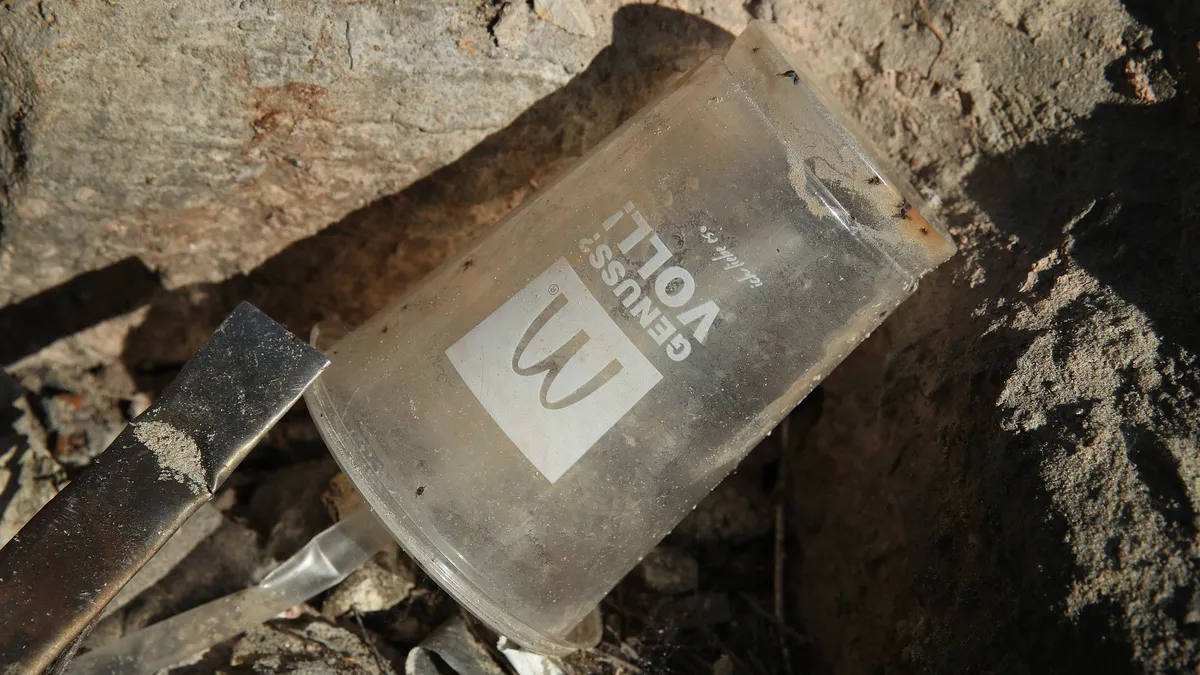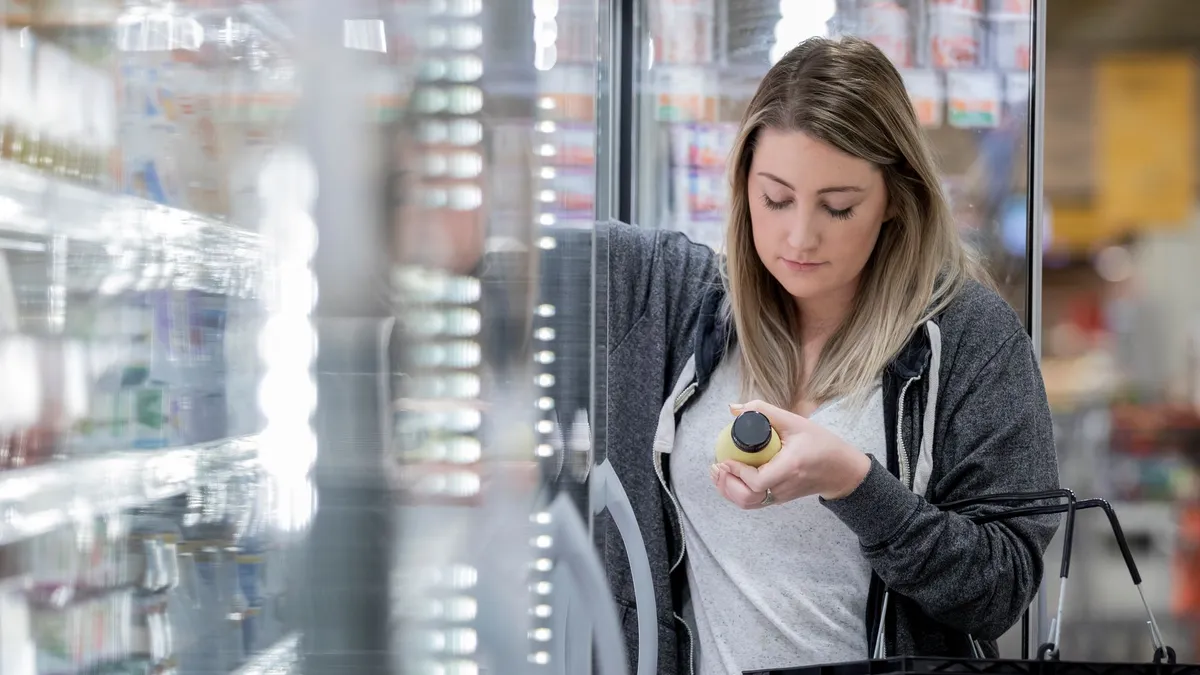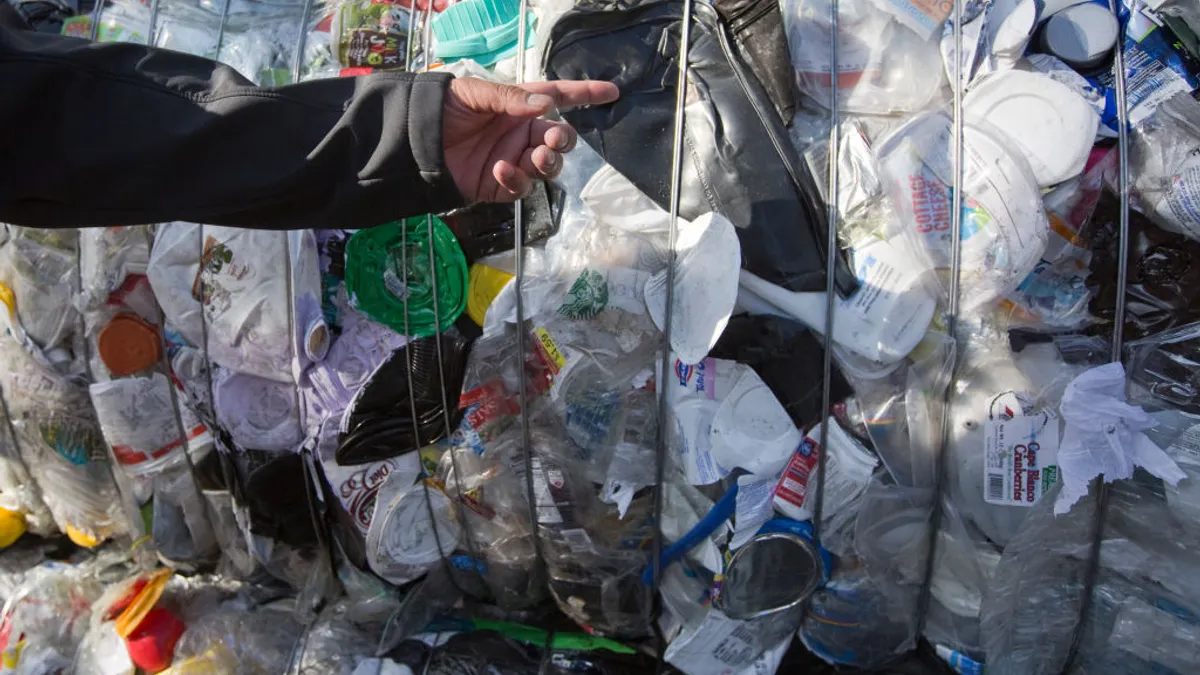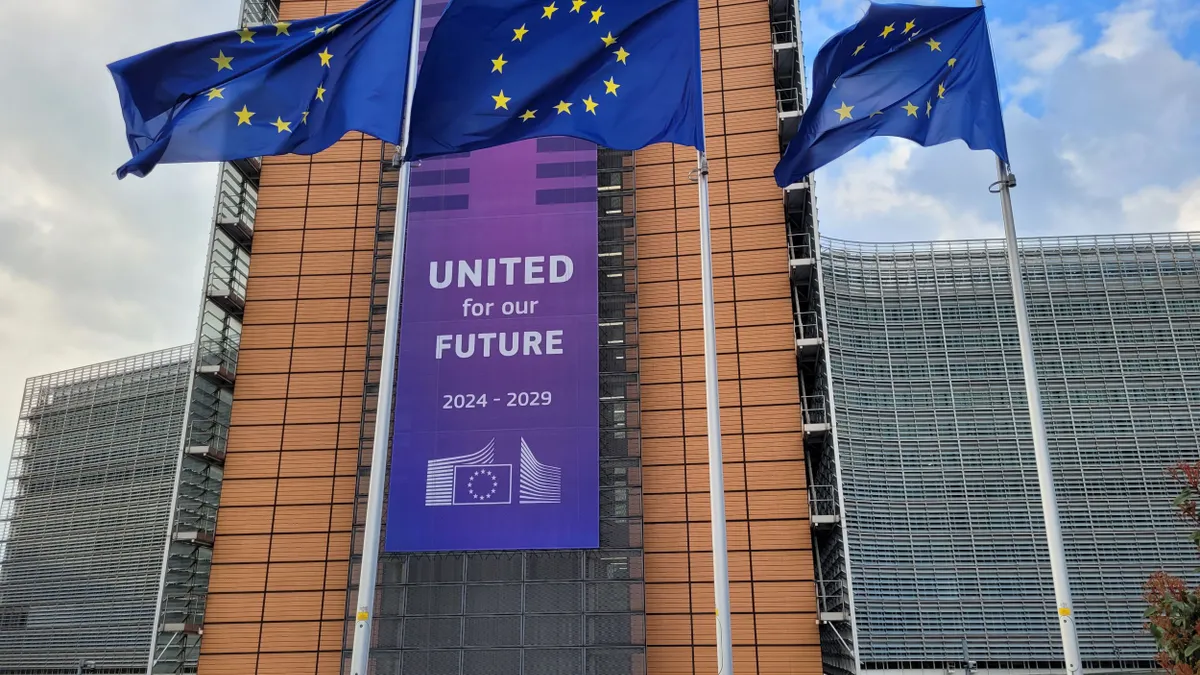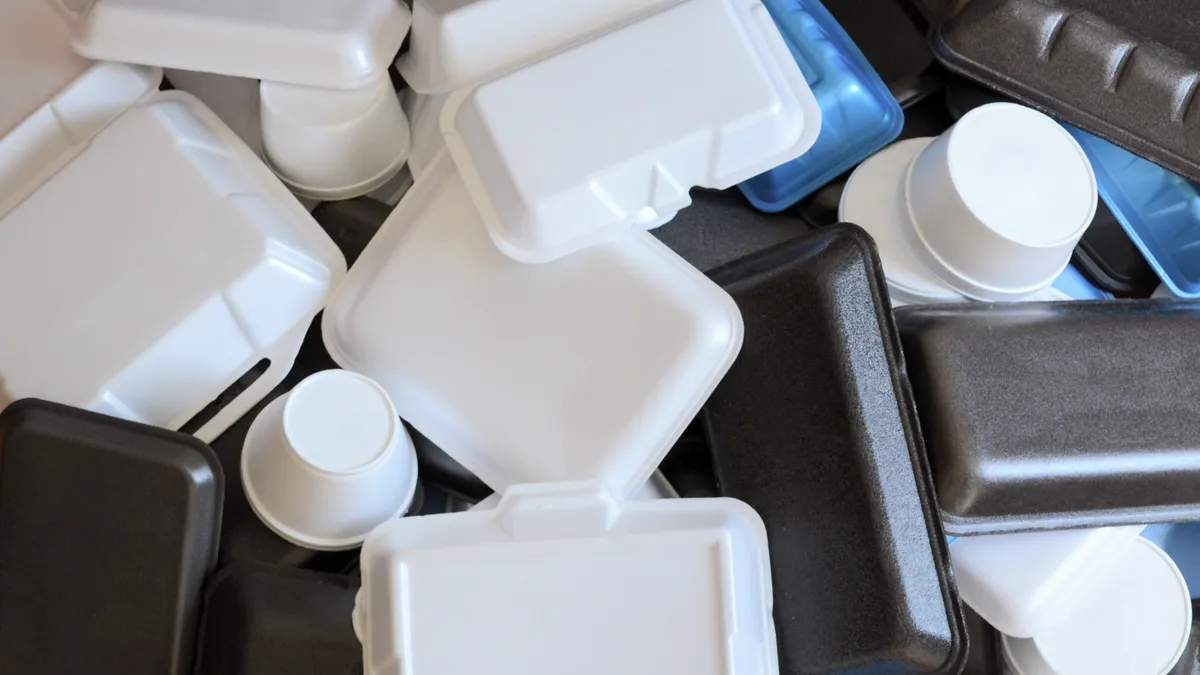Are reusable takeout containers better for the climate? The answer may depend on who funded the study you’re reading.
The past year has seen a small flurry of new life-cycle assessments comparing the emissions from returnable options to those of single-use packaging. While the timing of some reports was coincidental, others were meant to weigh on the minds of those voting on the Packaging and Packaging Waste Regulation, including in European Parliament this week.
The pending law would require more recycled plastic in packaging and could reduce volumes of disposable plastic. Earlier versions of the legislation introduced in 2022 had stronger targets for businesses to adopt reusable takeout containers. Those goals were reduced before a preliminary Oct. 24 vote following lobbying by McDonald’s and other companies that derive a large amount of their revenue from takeout sales.
“They’re winning the fight, to be perfectly honest,” said Clarissa Morawski, CEO of Reloop, which advocates for packaging reform policies like increased reusables.
A study backed by reuse proponents and an independent academic investigation found that reusable systems can create fewer emissions per serving, though studies backed by the fast food companies and the single-use packaging industry disagree. However, one factor that might affect the prospects of a returnable, washable, lower-emissions container are also some of the most challenging to predict: human behavior.
One purpose of LCAs is to track the energy and resource investments a product requires from its creation to its end of life, which could be disposal, recycling, incinerating, composting or mostly likely a blend of several. More specifically, LCAs typically focus on how much greenhouse gas a product is responsible for, said Simon Hann, a principal consultant with the environmental consulting firm Eunomia.
Laws or agreements meant to slow climate change evaluate progress by looking at emissions, so assessments of a reusable salad bowl or burger box want to use the same criteria. Besides, how much greenhouse gas a product creates can start a cascade of insights into related energy use, transport or other important factors like human health consequences.
“Whilst it doesn't cover everything, I have come around to thinking that [an LCA is] a pretty good overall indicator of the bad things we do in the world, essentially, without us looking at everything all at once,” Hann said.
Initial questions
Because reusable takeout container programs are relatively new for consumers and regulators, most LCAs focus on a cursory question: How many times does a returnable container have to be reused for it to have the same or less of an environmental impact than a single-use version?
Sturdier containers that withstand repeated washing and distribution take more resources to manufacture, said Christian Hitt, a sustainability researcher at the University of Michigan. If used enough, the resource investment could pay off, he said.
Reuse doesn’t guarantee lower climate impacts, however. Reverse logistics, like washing or transporting via a gas-powered van, cut into the climate benefits of a reuse cycle. How these variables play out could make or break the feasibility of a reusable container system. If too many emissions occur from how the containers are treated, sources say the number of reuses needed to break even with disposables can become unrealistic.
To better understand these factors, the studies create hypothetical operating scenarios for reusable systems. Ideally, the world built in the study pulls on real data, like how much energy goes into manufacturing a durable cup. In other cases, LCAs might substitute statistics from similar systems.
For example, an August 2023 LCA authored by Eunomia for Tomra, a reverse vending machine manufacturer, looked at how many reuse cycles a range of takeout containers would have to go through to break even with disposables.
When calculating emissions associated with container transport, the authors used the ratios and types of energy sources that Denmark relies on. The study also borrowed statistics from deposit refund systems. The authors assumed 98% of reusable containers are returned and 3% of customers would drive 2 kilometers to return the containers. With these parameters, the study concluded reusable polypropylene cups for cold and warm drinks break even with single-use polypropylene or paper cups in six cycles. Reusable bowls needed 13 uses, while pizza boxes would need 30.
Aarhus, the second-largest city in Denmark, launched a pilot program with Tomra this summer for deposit-based reusables. Customers return containers in public bins, scan QR codes on items and tap their phones to the machine for an instant refund.
This year Hitt and his colleagues published a study in the journal Resources, Conservation and Recycling that modeled a hypothetical reuse system in Ann Arbor, Michigan, which has a fledgling reusable takeout container program. One of the containers used by that system is an Ozzi polypropylene clamshell. Compared to polylactic acid or bagasse containers, the report found the reusable polypropylene versions needed about six or four uses to break even, respectively.
The model also showed how reuse-related emissions would pan out under a range of behaviors. If as much as 5% of customers made car trips dedicated to returning the containers, for example, the reusables would lose their climate edge over single-use.
Competing LCAs
Drastically different estimates of human behavior factor into two other recent LCAs. One was sponsored by the European Paper Packaging Alliance, an association including large packaging companies as well as McDonald’s and the parent corporation of Burger King. The other was backed by McDonald’s specifically. Their LCAs found that returnable, washable systems create more emissions than single-use protocols.
In the version published by the Ramboll consultancy for the European Paper Packaging Alliance, single-use paperboard items created half the emissions of a reusable system with polypropylene containers. In this LCA, the estimated return rate was 50%. A Eunomia assessment of the two industry-funded LCAs pointed out that this low expectation for return rates assumes the average container would only be reused two times.
“If you look at the current business models working with reusable system operators, some work with return rates that are way higher than that … because it is at the core of the business model,” said Nathan Dufour, a reuse systems manager at nonprofit Zero Waste Europe, which commissioned the analysis along with Reloop.
The research funded by McDonald’s and published by the Kearney consulting firm compared mandatory reusable targets in the proposed EU legislation to business-as-usual packaging operations. An all-polypropylene reusable system could generate up to 260% more emissions than today’s takeout packaging options, it concluded. The LCA backing up this claim assumed 70% of reusable takeout containers would get returned, a percentage based on “preliminary McDonald’s pilot data across select markets.”
Morawski said that the 70% return data likely comes from the start of the company’s reusable program in Germany where theft was a problem. The company has since shared that later phases of the pilot program saw return rates around 90%, she added.
If the statistics surrounding the McDonald’s pilot are changing, the shift reveals another potential weak point of LCAs and efforts to model reusable systems: The calculations struggle to show how people will treat returnables over time.
Though research still has to back up this assumption, consumers will likely become less inclined to keep a returnable package or will learn to rinse and not wash them at home as they get more familiar with the packages, Hitt said. People gradually remembering to bring their reusable bags to the grocery store shows how behavioral adjustments can pan out.
Financial mechanisms for not adapting can also encourage change, like charging shoppers for a new reusable bag or implementing deposits for certain beverage containers. Unless they are willing to also introduce deposits, Hann said reusable systems could struggle to reach the nearly-perfect return rates seen in some beverage infrastructure. “If you have a system that relies on goodwill and hopes and dreams, it probably will not work.”
Looking ahead
LCAs can’t always predict what behaviors people will adopt in the next decade, which is only a fraction of the amount of time diners have had to get used to disposable protocols.
The challenges of modeling future scenarios expand when clean energy goals are considered. A 100% electric cargo van would have fewer emissions than a gas-powered vehicle. Companies could continue R&D programs focused on lightweighting reusable containers. Businesses pooling resources and using the same containers or a centralized cleaning center could also change dynamics.
Researchers are also curious to go deeper in their studies beyond the cursory feasibility analyses. Hitt is working on an updated LCA that he hopes will compare the break-even points for stainless steel versus other reusable materials. LCAs generally haven’t compared different kinds of reusable containers — just one reusable compared to a few single-use materials. Stainless steel might generate more emissions to produce and drive around, but it can withstand more use cycles and is less likely to be mistakenly disposed, he said, and has better recycling rates in the U.S.
Larger and more diverse reusable takeout container systems playing out in the real world and informing studies — or vice versa — could be key for creating policy that would make multinational companies come forward with their reusable plans.
“We know there are plenty of them who are looking at this in quite a lot of detail,” Hann said. Policy that would encourage reusables and help set standards, he adds, would “level the playing field for reuse so that everyone can just step out together and innovate together.”


